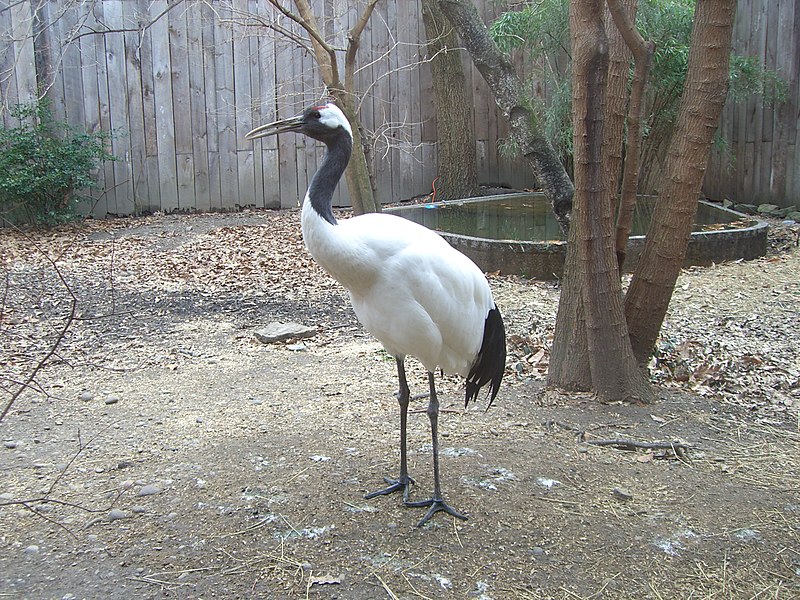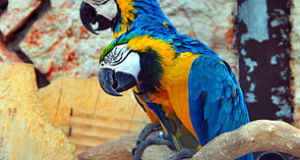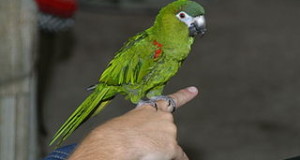 Gapeworms are parasitic nematodes (Syngamus trachea) that colonize the tracheal walls (please see photo) of a wide variety of wild, domestic and pet birds. These pests present somewhat of a dilemma, as they are associated with birds kept outdoors and/or those feeding on wild-caught invertebrates – two otherwise healthful aspects of bird-keeping!
Gapeworms are parasitic nematodes (Syngamus trachea) that colonize the tracheal walls (please see photo) of a wide variety of wild, domestic and pet birds. These pests present somewhat of a dilemma, as they are associated with birds kept outdoors and/or those feeding on wild-caught invertebrates – two otherwise healthful aspects of bird-keeping!
Symptoms
Gapeworms derive their common name from the symptoms they cause – open-mouthed gaping for air. As they grow in size and numbers, Gapeworms irritate the bird’s trachea and literally block air from entering. Other symptoms can include wheezing, coughing and noisy breathing.
While suffocation can occur, more commonly afflicted birds cease feeding and lose weight, after which they are attacked by faster-acting ailments such as pneumonia.
Fortunately, a Gapeworm infection is treatable if caught in its early to middle stages.
Gapeworm Life Cycle
Gapeworms require 2 hosts – an invertebrate and a bird – in order to complete their lifecycle. Common invertebrate hosts include earthworms, snails and certain insects, all of which are favored as food by the birds most typically infected – pheasants, quails, peafowl, guinea fowl and domestic poultry. Canaries and other Finches housed in outdoor aviaries are also at risk. Parrots are less commonly parasitized by Gapeworms, most likely because few species consume insects (infection can also occur by direct consumption of Gapeworm eggs and larvae).
A related Nematode, Cyathostoma bronchialis, attacks ducks and geese.
Gapeworms in Zoo Collections
 While working in zoos, I and my co-workers looked upon Gapeworms almost as a “necessary evil”. Since it was not possible to eradicate the parasite from huge outdoor enclosures or earth-bottomed indoor exhibits, we kept a close eye on birds for any sign of respiratory irregularity (as must be done even if Gapeworms are not a concern).
While working in zoos, I and my co-workers looked upon Gapeworms almost as a “necessary evil”. Since it was not possible to eradicate the parasite from huge outdoor enclosures or earth-bottomed indoor exhibits, we kept a close eye on birds for any sign of respiratory irregularity (as must be done even if Gapeworms are not a concern).
Outdoors, birds in our collection consumed large quantities of earthworms, insects and other potential Gapeworm hosts…food items whose nutritional value outweighed, I believe, the parasite risk. Interestingly, peafowl, cranes and others that roamed the grounds almost at will (please see photo) were not often afflicted by Gapeworms.
A Live Insect Alternative
Pet-keepers seeking to add variety to the diets of their insectivorous birds, but concerned about Gapeworm, would do well to consider using canned invertebrates.
Further Reading
A wide variety of other nematodes and cestodes parasitize pet and domestic birds; hopefully this list will not keep you up nights!
Red Crowned Crane images referenced from wikipedia and originally posted by Robin Chen
 That Bird Blog – Bird Care and History for Pet Birds
That Bird Blog – Bird Care and History for Pet Birds




You never mention how to treat gapeworm.
Hello, Frank Indiviglio here.
Thanks for your interest. Ivermectin, Flubenvet and several other medications are used to treat gapeworm. Experienced poultry breeders use some of these medications routinely, but the average pet owner should seek veterinary advice.
Please let me know if you need any further information.
Best regards, Frank Indiviglio.